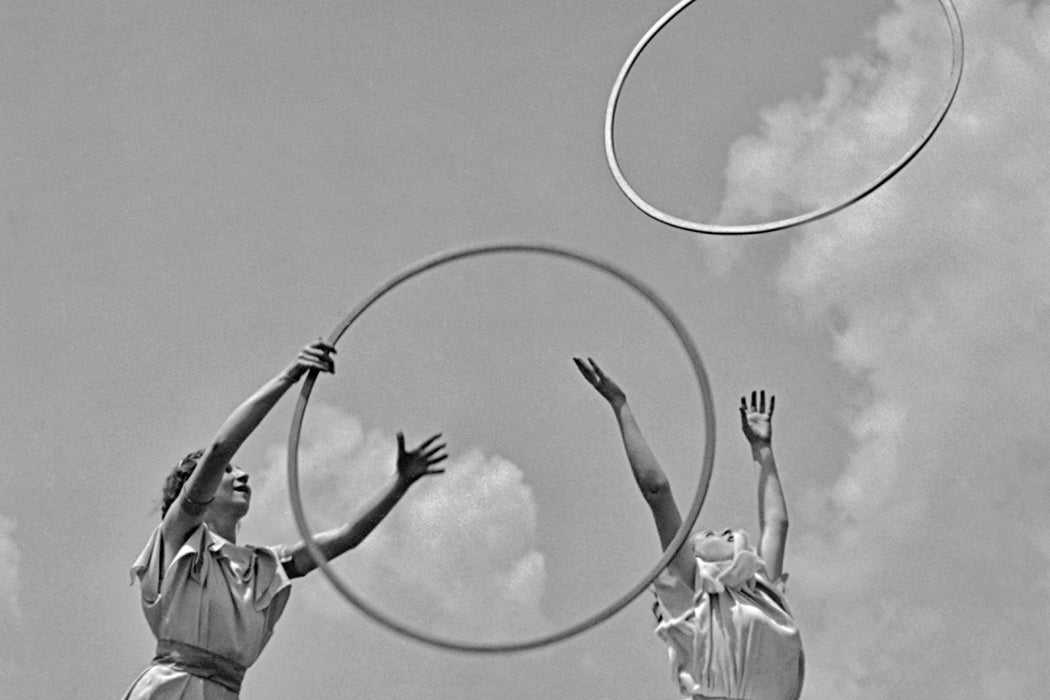Hoops and rings have been part of play for children in many societies since ancient times, but the development of plastics enabled the production of the hula hoop as a marketing sensation in the 1950s. The evolution of the hula hoop into a spiritual practice is a newer development.
The hoop was first marketed by Wham-O in 1958, the name Hula coming from the traditional Hawaiian dance, which does not feature a hoop but does feature a rhythmic movement of the hips. (Wham-O obviously had a knack for spotting a trend, they also sold the Frisbee.)
Initially, it was a wildly popular fad for children. Within a year some doctors were already concerned about “Hula-hoop Syndrome”, resulting in neck and abdomen pain from hooping too much. (Although one suggested it was not a problem as long as the hooper remembered to sometimes change directions).
But since those early years, the hula hoop has been taken up by other groups, for new dance forms, juggling routines, and adult fitness classes. And for some hoopers, it’s more than a hobby. When anthropologists studied the hooping community, they found something akin to a religion.
According to Martha Smith Roberts and Jenna Gray-Hildenbrand, hooping’s transition from toy to spiritual tool “emerged out of festival and rave cultures of the 1990s.” They found hoopers are able to enter a flow state, thanks to the rhythmic movements and concentration of hooping, with participants describing “being one with the hoop, feeling a state of bliss, and experiencing a loss of time.”
Weekly Newsletter
Many participants had first approached hooping for fun or fitness, only to discover these additional benefits. As one hooper testified,
I had originally looked to hooping as a form of exercise, but it ended up being so much more. It is something I go to when I am feeling troubled. I feel like it has been a great tool in making me feel more centered and calm.
Roberts and Gray-Hildenbrand find in hooping a parallel to other twentieth-century religious movements focusing on self-development and transformation, if one that some hoopers stumble onto accidentally. “Most hoopers explain they were not looking for a religious experience when they picked up their first hoop,” they write.
Rather, they had an unexpected transformational experience, which many then label as spiritual or religious. For these hoopers, the body in motion is the source of spiritual truth and authority (as opposed to a charismatic leader or sacred text).
As one hooper put it, “Moving the body is like religion and moving my body is the portal to that place.”
The folks at Wham-O couldn’t have predicted that.







